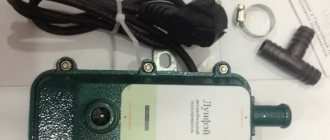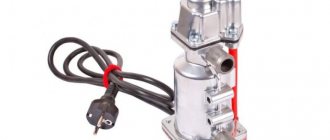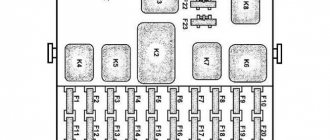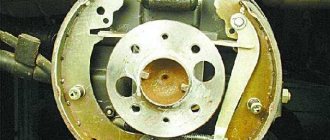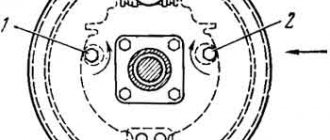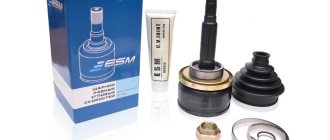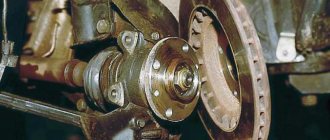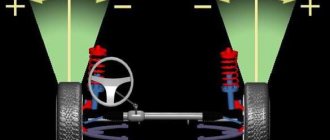One of the most effective means for combating difficult starting of a car’s power plant is pre-heaters, operating from a 220 V network and ensuring warming of the coolant before starting the engine. The car accessories market offers such devices from a variety of manufacturers, including Chinese ones.
Long Fei devices have gained wide popularity among car owners.
These pre-start devices, despite the fact that the manufacturer is Chinese, cope with the task quite well, and the installation of the Longfey heater does not require changes to the design of the power unit.
Heaters "Lunfey". Design Features
The manufacturer offers a choice of several device models with different performance indicators. This allows you to choose a heater for almost any car - from a city runabout to an SUV or truck. Despite the fact that there are several types of devices, the heaters are built according to the same principle - they are all tank type with forced circulation of coolant, although they look different in appearance.
The device of the Longfey heater implies the presence of:
- Heating element (operating from a 220 V network);
- Electric pump;
- Composite body;
- Thermostat;
The heater is electric, but it works with liquid. To prevent contact of electrical appliances with antifreeze, this type of housing is used. It consists of two halves separated by a partition. The cavity through which the antifreeze passes is completely isolated from the one in which the electrical elements are placed. But at the same time, the heating element and the pump impeller go into it. The liquid enters the heating tank through the terminals (supply and discharge) located on the housing cover.
Reasons for oil consumption
- Ovality and taper of cylinders. Due to the increase in clearances, the pistons operate in worn-out cylinders; even with a slight tilt, the oil bypasses the sealing rings and enters the combustion chamber at each stroke.
- Cylinder deformation. May be caused by uneven heat distribution or unevenly tightened cylinder head bolts. As a result, the oil scraper rings do not completely adhere to the deformed surface and do not remove excess oil.
- Incorrect operation of the PCV system. The primary purpose of the crankcase ventilation (PCV) system is to remove gases from the crankcase area to remove unburned hydrocarbons. The system uses a valve and rubber hoses that connect the crankcase to the intake manifold. The vacuum formed in the intake manifold draws gases from the crankcase and removes them into the combustion chamber along with ordinary air and the combustible mixture. The PCV system can become clogged and gases will not be effectively removed from the crankcase, which will affect the oil, allowing additional contaminants to form. Dirt settles on the oil scraper rings, which leads to their accelerated wear. Do not forget about damage to gaskets and seals due to increased pressure in the crankcase.
- Worn piston ring grooves. To form a good seal, the grooves must be smooth and flat. Piston rings in tapered and irregular grooves will not seal properly, again leading to oil in the combustion chamber.
- Worn, damaged or stuck piston rings. Oil enters the combustion chamber on the intake stroke and hot gases will leak through the gaps on the power stroke. All this will lead to oil combustion and the formation of deposits on the cylinders, pistons and rings.
- Damage to piston bridges/belts. The rings begin to wander, ceasing to perform their function. It can only be treated by replacing the pistons.
- Worn valve stems and guides. If the valve stems and guides become worn, the vacuum created in the intake system will draw oil and oil vapor into the cylinder between the intake valve stem and guides.
- Bent or misaligned connecting rods. Bent or misaligned connecting rods will prevent the pistons from moving smoothly in the cylinders. Thus, the pistons and rings do not achieve the proper sealing effect, which leads to increased oil consumption.
- Fuel dilution. If such fuel enters the lubrication system, the oil becomes thinner and evaporates faster, which again leads to increased oil consumption.
- Clogged cooling system. Corrosion, rust, scale, sediment or other deposits in the water jacket and radiator prevent the cooling system from dissipating heat effectively. These factors can cause deformation of the cylinders (see point 2).
- Oil viscosity. Using oil with insufficient viscosity, as well as one that does not meet the tolerances, can lead to increased oil consumption. It is worth considering the region of operation and the ambient temperature.
- Contaminated oil. Without regularly changing the filter and oil, it can become so dirty that the capacity of the oil passages of the piston rings and pistons is reduced as a result of dirt accumulation and plaque formation.
- Crankcase overflow. Due to incorrect installation of the oil dipstick in the socket, the dipstick will show a low level. If oil is added to the "normal" mark, the actual level will become too high. If the oil level is so high that the lower ends of the connecting rods touch, excess oil is supplied to the cylinder walls, causing it to enter the combustion chamber.
- Excessively high oil pressure. A faulty pressure relief valve causes excess oil to enter the engine.
- Chiptuning and power modifications. The engine operates under suboptimal conditions other than those specified by the manufacturer.
- Motor overload. Overloading or "choking" of the engine occurs when it operates at lower speeds in situations where it should operate at higher speeds. Most often it occurs on cars with manual transmission when the gear ratio and speed are incorrectly selected.
- Turbocharged engines. As a result of increased pressure in the PCV system, which is typical for turbocharged engines, oil enters the intake manifold, from there into the intercooler, then into the engine and flies out with bluish smoke through the pipe.
- Difficult air intake. A clogged air filter increases engine vacuum.
- Intake manifold seals. Wet pan V-twin engines (3.3/3.8L) may suck oil into the intake ports due to an improper seal between the intake manifold ports and the cylinder head. Causes include improper intake manifold bolt torque, corrosion (aluminum intake manifolds) and/or seal warpage.
If you completely trust the official documentation, you get the feeling that our engine is not gasoline, but very much oil-based. Most cars have long crossed the 80K kilometer mark, many have already driven three and four hundred thousand, but they do not observe all the horror listed above, many do not top up at all from replacement to replacement. Owners without increased oil consumption are united by the following features: a quiet ride, timely maintenance and the choice of the correct oil. Statistics collected over the last eight years say one thing: if your engine is “consuming” oil, then something is wrong with it and it’s time for diagnostics. This is not typical for Americans in general.
Models and their characteristics
Longfey electric heaters are divided into series. The models included in each of them differ in performance characteristics.
The manufacturer offers customers a choice of series:
"Little Q"
Heaters of this series have a square shape with parallel pins. In terms of power they come in 1.5 kW, 1.8 kW and 2.0 kW. The pump capacity for all models is 8 l/min. Designed for insertion into a small circle of the cooling system. Installed in a small circle of the cooling system;
"Little Dragon"
Models in this series are rectangular, the terminals are located perpendicularly. It includes three models, identical in power and performance to the previous series;
"Decepticon"
A series of powerful rectangular heaters (2.0 kW, 2.5 kW and 3.0 kW) and perpendicular pin arrangement. At the same time, their pump performance is still the same 8 l/min;
"King"
Includes only one model - 3 kW. This heater has a rectangular shape with terminals installed perpendicularly. Electric pump capacity – 8 l/min. It is placed in a small circle of the system;
"Brothers"
The series also consists of one 3-kilowatt barrel-shaped model. Its leads are installed perpendicularly, the pump pumps 8 l/min;
In general, all models differ from each other only in the power of the heating element and the shape of the body.
Brand Archive
| ALFeco (Alfeko) – protection of the crankcase (pan) of the engine and gearbox |
Advantages and disadvantages
The advantages of Longfey preheaters include:
- Small overall dimensions, which makes it easy to find a place for its installation;
- The presence of a pump ensures uniform heating of the antifreeze in the system due to forced circulation;
- Availability of overheating protection systems (when a certain temperature is reached, the device turns off);
- A wide selection of models allows you to choose a device for any car;
- Connecting the Longfey heater will not cause any difficulties and does not require modifications to the motor;
But they also have certain disadvantages that relate not only to the devices of this particular manufacturer, but to the design and operation features of all devices of this type:
- To connect, you need a 220 V socket, so such devices cannot be used if the car is located far from housing;
- Requires compliance with safety precautions when using;
- The breakdown is detected only during the process of starting the car (the device was turned on, hoping that it would work, but then it turns out that the engine is not warmed up);
But all the negative aspects do not become a reason to use this device in a car. But at the same time, for everything to work normally, the Longfey preheater needs to be installed correctly.
Brand Archive
| ALFeco (Alfeko) – protection of the crankcase (pan) of the engine and gearbox |
Connection methods
Since the instructions included with the devices are poorly translated, and the diagrams depicted in them are not very clear, many simply cannot figure out how to properly install the device with their own hands.
There are several ways to install the device on your car. The first connection diagram is serial, and it is shown below:
Sequential installation diagram of the Longfey heater
It is more suitable for models with a parallel arrangement of terminals, since the device is inserted into only one pipeline of the system - supplying antifreeze to the interior heater radiator.
This scheme is quite simple, and to install it you need:
- Find the required pipe (on a warm engine, find the pipelines leading to the stove and check the degree of their heating with your hand. The connection is made into the warmer pipe);
- Drain the coolant;
- Choose a place to mount the heater on the engine or body (away from highly heated elements). If necessary, you can make a mounting bracket;
- Cut the pipeline and install the device into this cut (it is important not to confuse the heater leads: we connect the section leading from the engine to the water inlet, and the section leading to the heater radiator to the drainage outlet);
- Secure all connection points with clamps;
- Secure the device;
- Fill with coolant and check connections for leaks;
- Lay the heater cable along the body and remove the plug to a convenient place for connection. The wire must be secured;
With this connection diagram, for normal operation of the device, you should always keep the coolant supply valve to the heater radiator open.
The second connection method is parallel. It is more suitable for models with perpendicular leads. A diagram of such an insert is presented below:
Parallel installation diagram of Longfei heater
This scheme is somewhat more complicated in terms of implementation. You will also additionally need to have:
- Pipelines of appropriate length and diameter;
- Fitting for connecting the pipeline to the cylinder block (installed instead of the drain plug);
- Tee (for inserting into the pipeline);
- Clamps.
To install the heater in parallel, do this:
- Drain the coolant;
- We unscrew the drain plug on the cylinder block and screw in the fitting instead;
- We cut the pipe leading from the radiator to the engine (upper) and install a tee in this cut;
- Choosing a place to install the heater;
- Using prepared pipelines, we connect all the elements into one system (we connect the water inlet to the fitting, and the water outlet to the tee);
- We tighten all connections with clamps;
- We attach the heater;
- Fill with coolant;
Now, as for connecting the Longfey heater to an outlet. It is better to do this through an adapter with a timer, which will allow you to set the time to turn the device on and off.
If an extension cord is used to power the device, the wiring in it must be designed for the load created.
Finally, we note that even though Longfei heaters are manufactured in China, they are quite reliable products that can work for a very long time. The only malfunctions they have are usually associated with burnout of the wires inside the device. Fixing such breakdowns is not difficult.
NADIA: number of spiritual aspirations “8”
Eight is the number of aspirations of the soul, giving a person a tremendous desire for independence. There are no authorities for such people. Their own thoughts and idealistic ideas about the world make them outcasts and renegades. However, enormous determination and the ability to dictate their own rules lead G8 people to recognition and well-deserved leadership in the team.
The thirst for power, wealth and fame abound
Wanting to provide a decent standard of living for his family, a person number eight may take a dangerous path, but natural caution will not allow him to suffer from his own indiscretion. The sooner such a person finds the most suitable business for himself, the sooner he will gain authority, and the more measured his life will be.
If this does not happen, then the “eight-ball” plunges into the fight against stereotypes, prejudices, norms and perceived injustice. Eternal battle deprives people of the number eight of strength and vigor, as well as the likelihood of finding their happiness. Eights often have entrepreneurial abilities, but do not risk their money. Their business is successful, and their partners and investors are honest.
Luck accompanies people of number eight only when the right direction for self-expression and realization is chosen. Living only by your own interests leads to melancholy, despondency and loneliness, but selfishness fades away as soon as the understanding comes that the more you give, the more you gain.
Number eight people have huge ambitions, but do not always find the strength to realize them. The ability to convince and attract others with oneself opens up considerable opportunities for one’s comrades, but an overly difficult choice of a leader is punished by one’s own like-minded people with a stab in the back. Resourcefulness helps to navigate a difficult situation, and speech, supported by well-founded arguments, inspires boundless confidence.
The worst version of the “eight” is impatient, devoid of prudence, capricious and incredibly picky in love relationships, but even such a person always listens to the voice of reason and will reconsider his actions if he is convinced that this is necessary to fulfill his plans.
